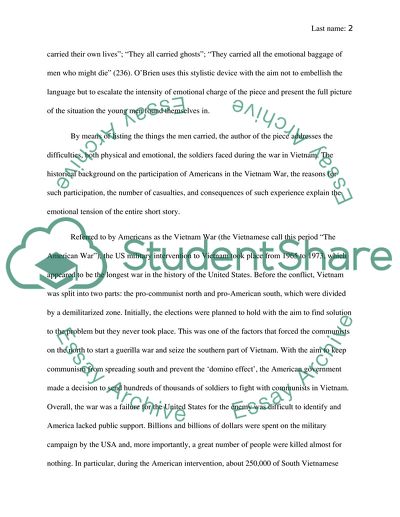Cite this document
(“Cultural Context of The Things They Carried by Tim OBrien Essay”, n.d.)
Retrieved from https://studentshare.org/literature/1667928-cultural-context-of-the-things-they-carried-by-tim-obrien
Retrieved from https://studentshare.org/literature/1667928-cultural-context-of-the-things-they-carried-by-tim-obrien
(Cultural Context of The Things They Carried by Tim OBrien Essay)
https://studentshare.org/literature/1667928-cultural-context-of-the-things-they-carried-by-tim-obrien.
https://studentshare.org/literature/1667928-cultural-context-of-the-things-they-carried-by-tim-obrien.
“Cultural Context of The Things They Carried by Tim OBrien Essay”, n.d. https://studentshare.org/literature/1667928-cultural-context-of-the-things-they-carried-by-tim-obrien.


